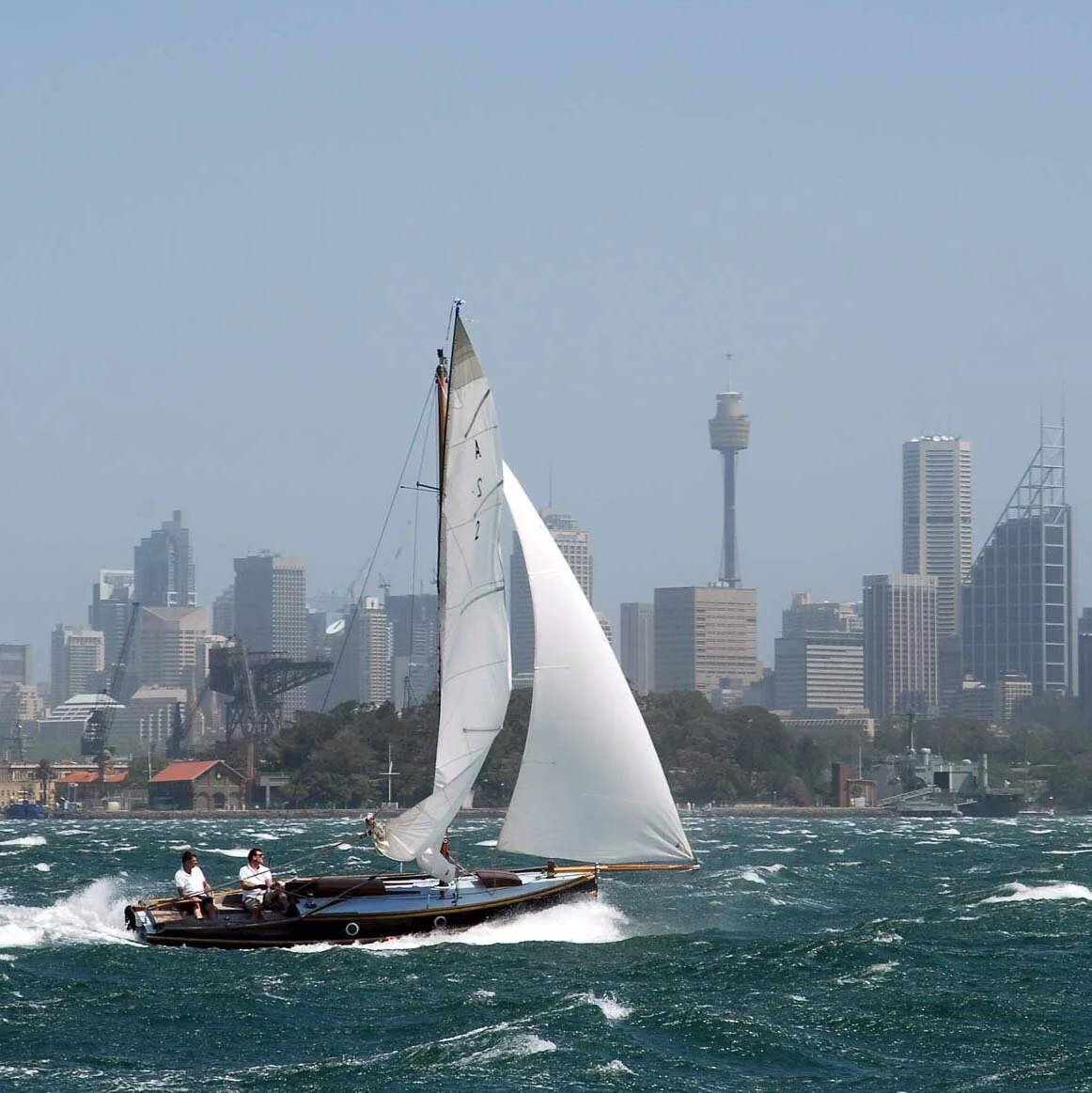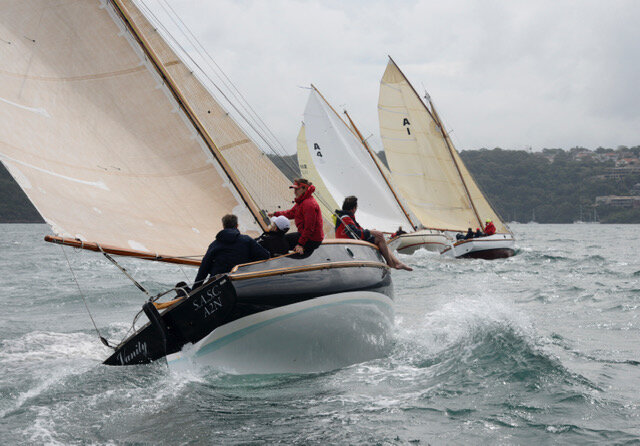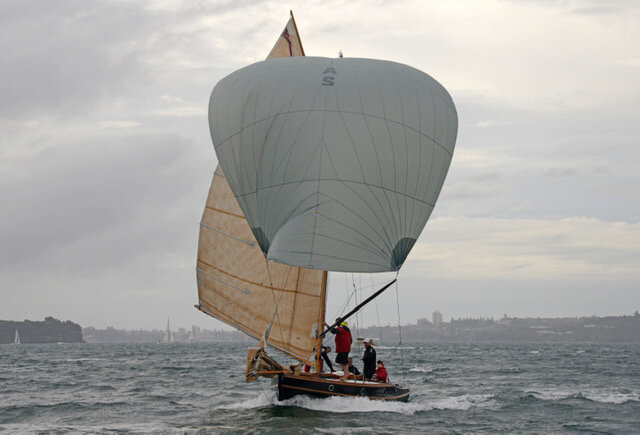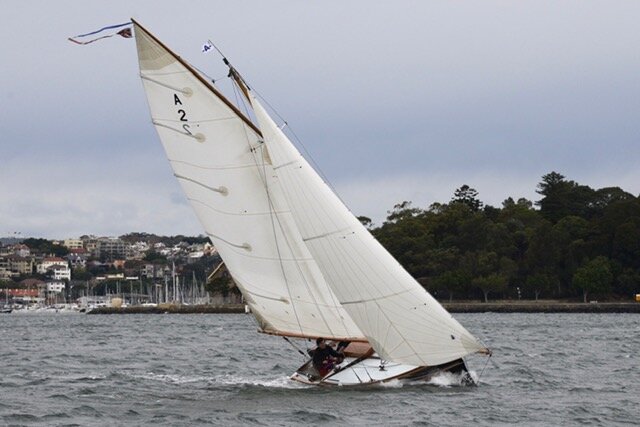“The Archetypal Sydney Harbour Day Boat”
This month marks the twentieth anniversary of the Launch of VANITY, the 24ft Ranger Class Gaffer, that has set the standard for the class over the last two decades.
On this anniversary we have the pleasure of reproducing an article written by her custodian John Crawford and first published in the CYAA Magazine, in 2005 - A SYDNEY HARBOUR DAY BOAT.
For those who don’t know, the raised deck, gaff rigged “RANGERS” that frequent Sydney Harbour are the archetypal Sydney day boat. RANGERS epitomise the essence of day sailing, with their huge cockpits, and handy size, good for fishing, racing, motorboating and sailing. They are icons on the harbour, instantly recognisable and sturdily handsome boats. Seen together they look identical at first glance, gaff rigged, raised deck, three portholes, varnished sponsons, bowsprits and toerails, all around 24 ft from stem to stern with a 9ft beam and displacing about 3.5 tons. People liked them, and RANGER, the prototype buily in 1933, was followed by VAGRANT (1937) VALIANT (1938), ETRENNE (1946), CHERUB (1948/49), CAREEL (1948), KILKIE (1953) and VANITY (2001). In the tradition of RANGERS, each one is a copy of RANGER herself, but each carries modifications and improvements, made by their individual owners, with each of the respective boatbuilders adding their personal touch as well. During the period some larger Rangers were launched. MATHANA (35’0”), MALUKA (28’0”) and RETREAT (26’0”). Commissioned by the Clark brothers, MALUKA was launched in 1934 and sailed far afield - up the North Queensland coast, down the Victorian coast and across the South Pacific to Lord Howe Island some 480 nautical miles due east of Sydney - thus attesting to the seaworthiness of these little yachts.
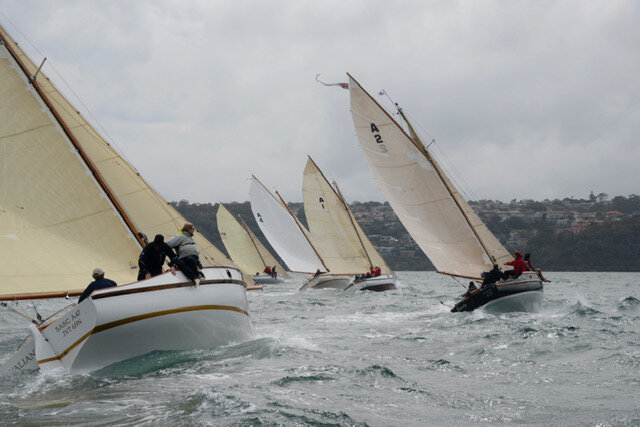
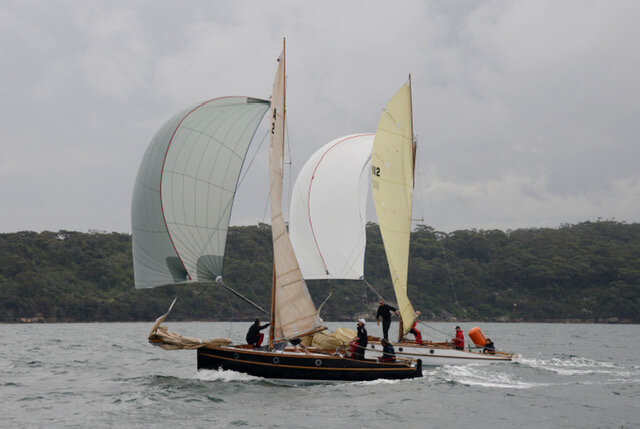
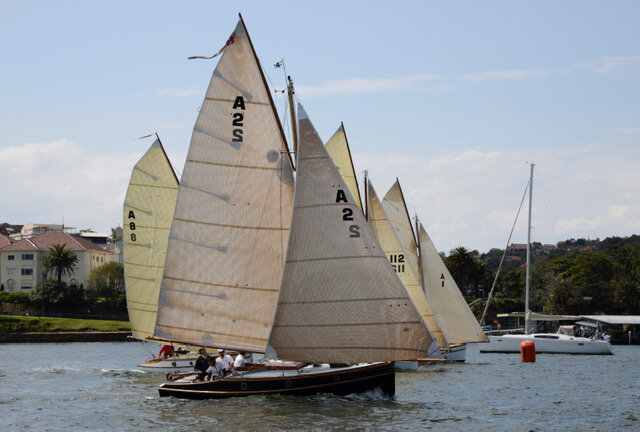
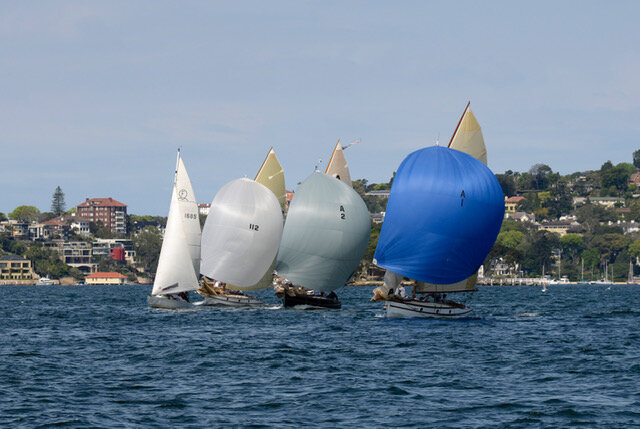
ADVANCING THE DESIGN
In 1933 Cliff Gale, a gifted amateur designer and a natural skipper of anything with sails, designed RANGER as a multipurpose family yacht. Originally lug rigged with a centreboard she was to be used for family outings and beach picnics. Over the years the quest for speed resulted in changes to both hull and rig. Gaff replaced lug and the centreboard gave way to a full-length keel. Later, cotton sails were replaced with synthetic cloth, more lead was required to counter act the greater loads, an aluminium gaff to reduce weight aloft. Still more lead, a feathering propeller, a modern lightweight rudder, a new and lighter engine and a faired hull - she got faster and faster. Part of the reason for the improvements to RANGER was prompted by the restoration and rebuilding of each of the other RANGERS during the mid 1990’s. KILKIE followed by VAGRANT and VALIANT, each had major re-builds. This work created a great deal of interest and sharpened competition on the water. It also highlighted the suitability, beauty and desirability of the RANGERS as the perfect Sydney Harbour dayboat. In 1993 Sean Langman, of Noakes Boatyard re-acquired VAGRANT. Previously owned by the Langman family in the fifties VAGRANT was nearly sixty years old, very tired and a little rotten. She was stripped and re-built. The deck and hull to the waterline was clad in a heavy-duty fibreglass cloth and epoxy coated, filled and faired. Laminated ring frames were installed, and the mast step extended to land more floors. Campaigned expertly by Sean and his crew, she replaced RANGER as the benchmark in the 1997 sailing season. The success of this restoration and the experience thus gained was next used to re-build VALIANT. Built a year after VAGRANT, by Vic Hoyle in Drummoyne, VALIANT had undergone a number of ‘improvements’ including a bigger rig and more lead. After several seasons of hard racing, she was ‘falling apart’ under the strain. Under the guiding hands of Sean Langman and John Crawford VALIANT was rebuilt and re-launched. Faster and more competitive she was ready for another fifty years.
THE VENERABLE VANITY
It was during this collaboration between John Crawford and Sean Langman, that Sean floated the idea of building a new 40’ RANGER using modern epoxy glass techniques on a strip planked timber hull. This interesting proposal was debated at length and resulted in an agreement to build a 24’ prototype, with the view that it would be much less expensive than a forty-footer and that the end result would add one more boat to the existing RANGER fleet. Sean had a dream about building a black RANGER and calling it VANITY. VAGRANT VALIANT and VANITY - it had an irresistible alliterative quality which added to the excitement of what was to prove a wonderful journey filled with eccentric personalities and the frisson of creation. With VALIANT completed the opportunity of participating in the design and construction of the first new Ranger in fifty years presented itself. Sean didn’t want to own VANITY because VAGRANT was and always will be the Langman family yacht. And so, I agreed to become the first custodian of VANITY.
Having owned VALIANT for many years I was acutely aware of the idiosyncrasies of classic yachts and RANGERS in particular. VANITY was to be the yacht to last me the rest of my sailing life. She had to encapsulate my dream and my reality, and she had to capture the essence of what makes a RANGER a RANGER. She must be beautiful, a classic, simple, easy to keep, easy to sail, easy to use. She had to look like a RANGER and sail like a RANGER - in short, she had to have all the advantages of a modern yacht combined with all the pleasures of a classic yacht. This then formed the basic brief that became VANITY
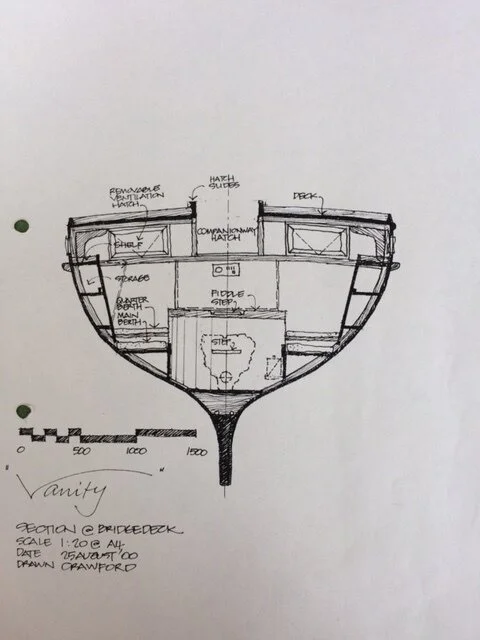



IN THE MAKING
Interestingly, VANITY was other things to other people. Her design is a refinement of the lines of RANGER, VAGRANT and KILKIE. The design process was used to compare RANGER’S lines plans with KILKIE and VAGRANT. VANITY was lofted full size on the floor of Noakes sail loft tweaked and pushed and pulled. A little of RANGER’S lines and a lot of VAGRANT’S and KILKIE’S went into her design. Bill Gale, son of Cliff Gale the designer of RANGER, was beside himself with excitement at the prospect of a modern RANGER on Sydney Harbour. For Sean and the team at Noakes Boatyard, VANITY was the first yacht built from scratch at the yard. It became ‘their’ yacht and, even for the yard crew who weren’t working on it, the sense of ownership was palpable.
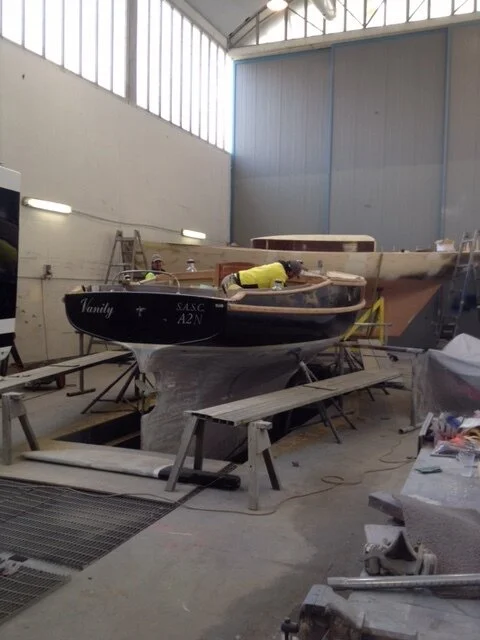
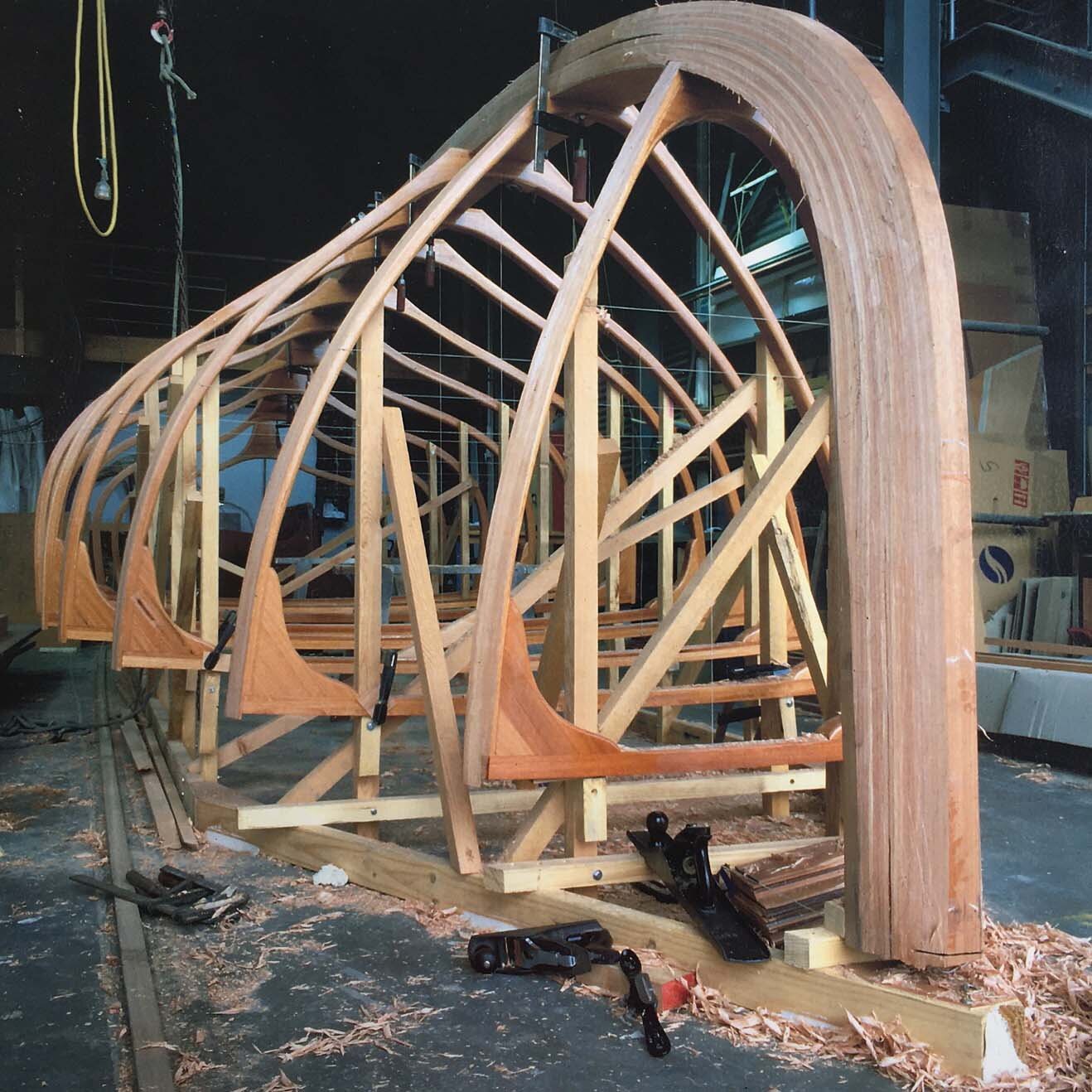
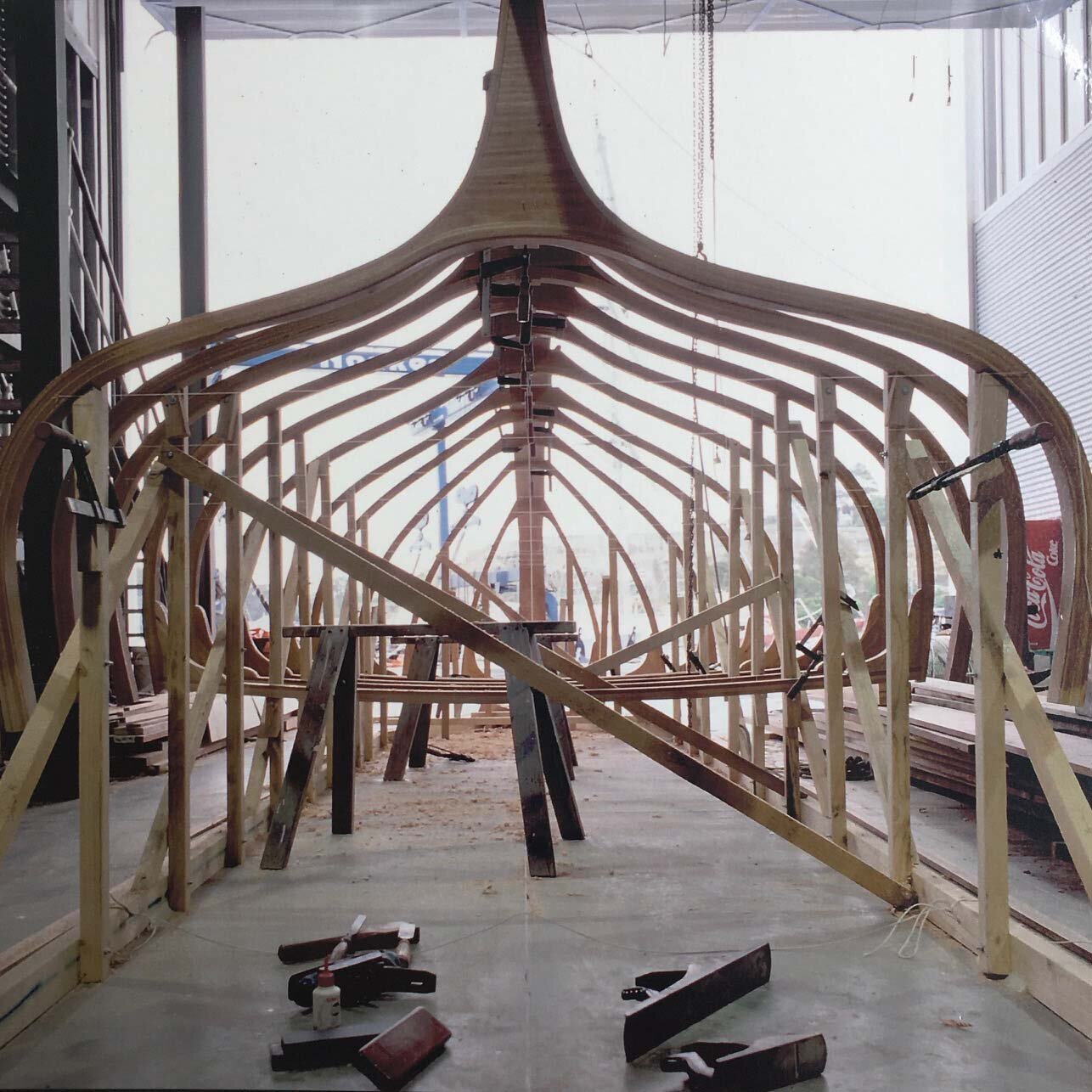

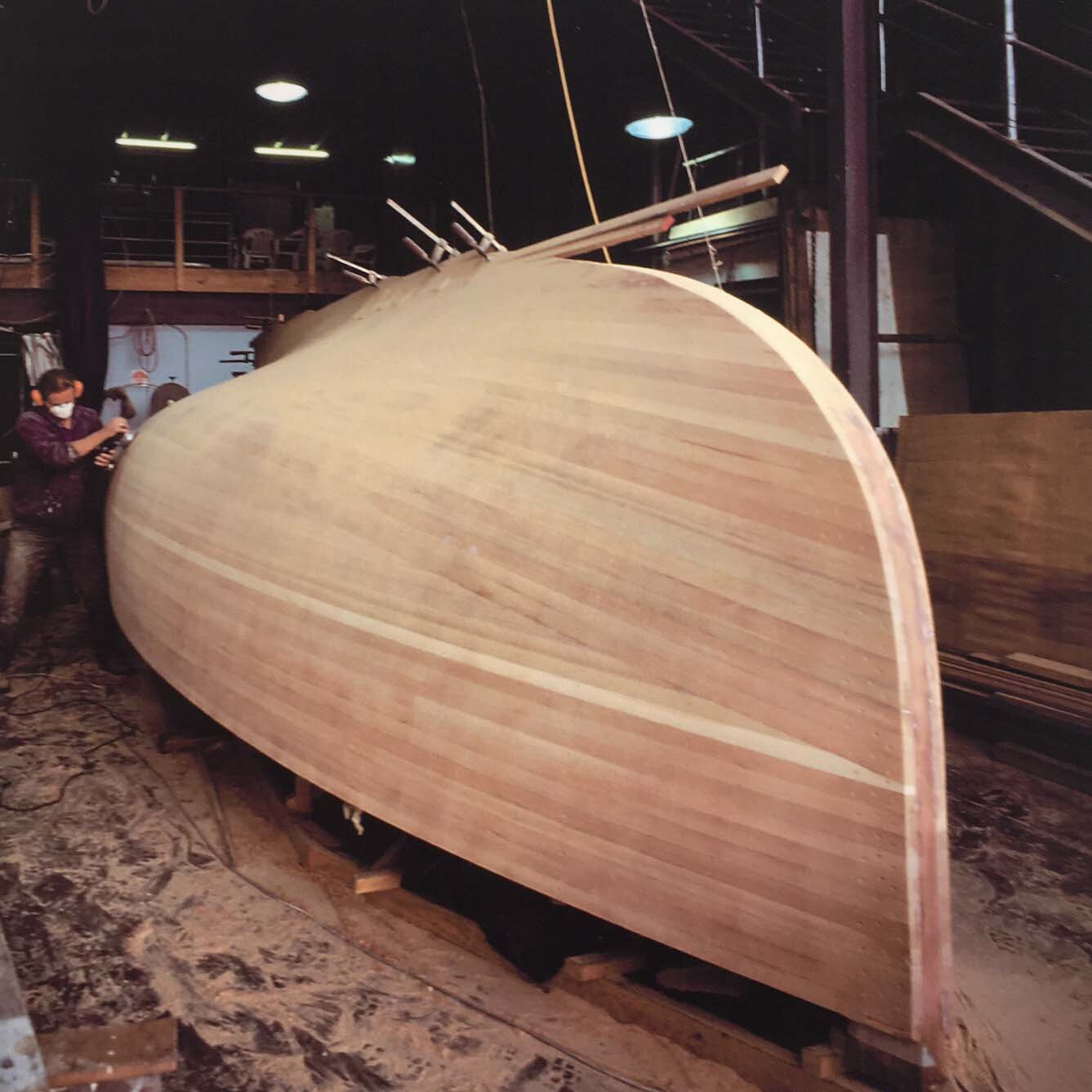
As her form morphed through the skeletal stage to a recognisable boat shape the visitors came in droves and the critics proffered their opinions. The hull was built upside down and construction took advantage of the best of modern timber/epoxy technology. The traditionalists tut-tutted about the epoxy and glass, but none of them denied that she was a work of art and a fine example of the craft of wooden boatbuilding. She is after all a timber yacht. Clear finished ring frames approximately 2’’ x 2”, crafted from fourteen laminates of flooded gum, were set at two foot (600mm) centres, connected by a massive one piece laminated keelson and stem that ran the full length of her 24’3”. No shelf beams, no stringers, no carlins. Hull ‘planking’ comprised 1” x 11/2” Oregon strips fitted to the frames and edge glued and screwed. This was followed by long board fairing and then a heavy weight tri-axial fibreglass cloth and epoxy, followed by more fairing. In 1999, approximately two years after the first timber was delivered to the yard, VANITY was turned over and moved to a corner of Noakes shed to be fitted out. It wasn’t that she was being worked on all that time, there were long periods where pressure of other work took over and I was happy to play second fiddle to a busy yard. Noake’s Boatyard was growing fast and Sean was fully occupied. I was given a corner of the shed and Sean suggested I employ Gary Ferres, a shipwright, to carry on with the fitout of the hull. Sean promised to keep an eye on progress and was always available to discuss ideas and comment on proposals. Having built a few small boats in my youth I had some idea of what was required. My ideal would have been to take time off work and work alongside Gary but logic and common sense told me that my talents were more use elsewhere, so I contented myself with making drip trays, floor gratings, tillers, bowsprits and anything that was small and manageable. I produced sketches of the layout, which eventually ended up taped to VANITY’S’s bow in an attempt to inform the critics who loved nothing better than chatting with Gary about the merits or otherwise of the proposed work. I was responsible for the internal layout. Very simple. The first 8’0” from the bow to the mast is open space for sail storage, an anchor locker and a head. The next 8’0” from the mast/ bulkhead to the end of the raised deck, is occupied by long bunks, port and starboard, with curved lockers set against the hull to act as backrests, and beyond that open shelving and hanging rails for sheets braces and racing paraphernalia. Two snug, but 8ft long, quarter berths are located port and starboard of the engine compartment and extend to the stern. The engine sits neatly under the bridge-deck, just clear of the cockpit floor. From within the cabin both the top and the front of the engine compartment are removable (pull apart) and fit together with a push-fit, providing complete access to the engine bay and drip tray. The battery is located to port beside the engine and the fuel filter to starboard, both readily accessible with the covers removed. Engine instruments and switchboard are located directly above the engine and mounted on a false panel with space for cabling behind. A removable floor hatch in the self-draining cockpit, provides direct access to the gearbox, flexible coupling, dripless seal and propeller shaft.
PRACTICAL SIMPLICITY
Because access is so easy nothing gets neglected. This was an essential ingredient of the brief, born of experience with yachts where the engine access is possible only by a contortionist with long arms and infinite patience, or alternatively half the boat has to be dismantled to change the oil. Which means the oil doesn’t get changed. VANITY’S fitout is modern and minimal. The theory being, that if you need it you can always add it, but if you don’t need it, don’t add it until you really need it. The theory works because 90% of the time you never miss what you think you need. It’s all about the difference between the dream and the reality.
On VANITY the available space below decks compares favourably with many larger yachts. The essential brief for this outcome is based on the simple premise that if you have eight guests seated in the cockpit and it starts to rain, you will need to be able to retreat below decks and seat those eight guests in equal comfort without breaking up the party. This is a simple approach and has been verified on a number of occasions. VANITY’S interior, with a group of good friends and glass or two of wine, is a memorable and comforting space and lacks nothing that cannot be supplied by another glass!
FINER DETAILS
And so to some details. We could have made VANITY a much quicker yacht than she is. She is already very fast for her size. According to Bill Gale, she is the fastest small heavy cruiser in Australia. Even so her mast could have been at least four feet longer, and both gaff and boom bigger than RANGERS. She can carry more sail area, stand up straighter and go faster. She could have a carbon fibre mast and gaff and go faster, she could have a lot of things and go faster, but there is not a lot of pleasure in knowing that you have a technological edge over your competition. Speed is relative. What we wanted was for VANITY to be like the other RANGERS. Same length, same beam, same displacement, same sail areas. VANITY’S main edge comes from her improved ballast ratio. Both VANITY and RANGER are approximately three and a half tons, but VANITY has a better ballast ratio due to the fact that her hull, although the same thickness as Ranger’s, has less framing and support members due to the strip planked construction. The hull is lighter, but the overall weight is the same. The difference being, in the case of VANITY, that the additional weight has been placed on the keel, making her stiffer in a breeze and better able to carry sail in stronger winds. In light conditions, where stiffness is almost a disadvantage, there is very little difference between the two yachts and a number of times there has been only seconds between them afer two hours of racing on Sydney Harbour.
In the end I believe that with VANITY we have distilled, encapsulated and combined the essence of a classic yacht into a maintenance free, easy to use modern yacht. She epitomises pleasure in use. She unashamedly utilises any modern techniques and equipment that make her stronger or easier to sail. Self-tailing winches, roller bearing track slides, halyard jamming cleats, aluminium gaff and spinnaker pole, self-draining cockpit, lightweight rudder, feathering propeller.
By contrast however, there are some things that if changed would diminish her classic feel. Laid timber decks in the cockpit, varnished sponsons, toe-rails, hatches and trims. A timber mast. Why timber? Because the sound of halyards on an aluminium mast is tinny and false and a timber mast has aesthetic appeal, both above and below deck. Internally a white painted v-jointed boarded ceiling, varnished trims against white joinery, opening portholes and the traditional RANGER bridge-deck hatches that let the light flood below. All these are mandatory on my list of what makes a RANGER a RANGER. The trick is to get the balance right and my answer to that, in the case of VANITY, is that I would not alter any of my original decisions and if I was doing it again. I’d do it the same.
It works for me.
//
By John Crawford


